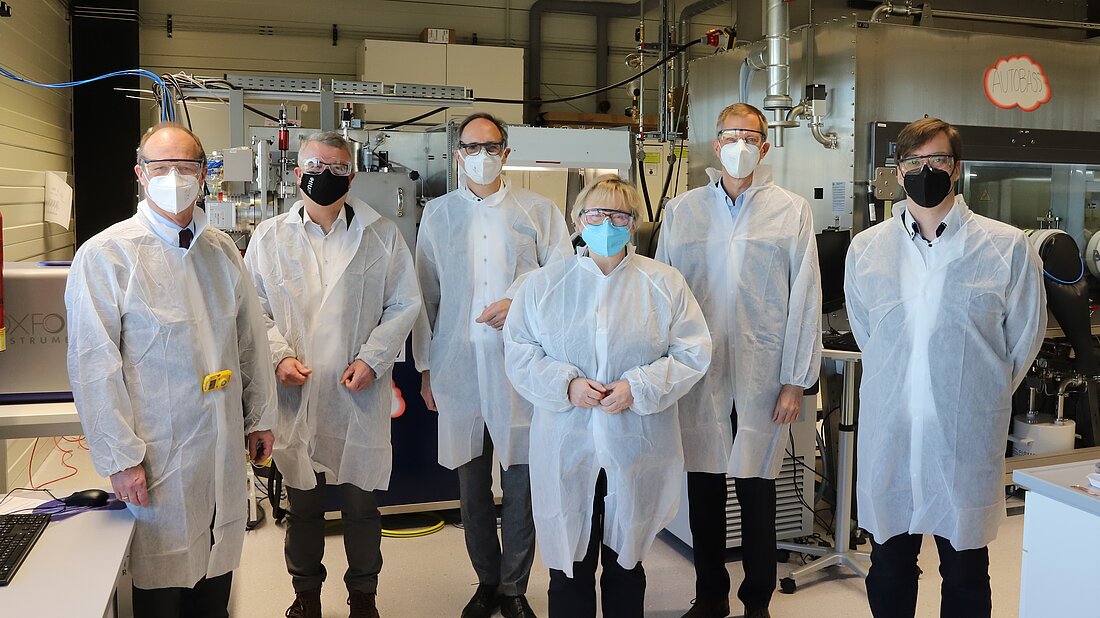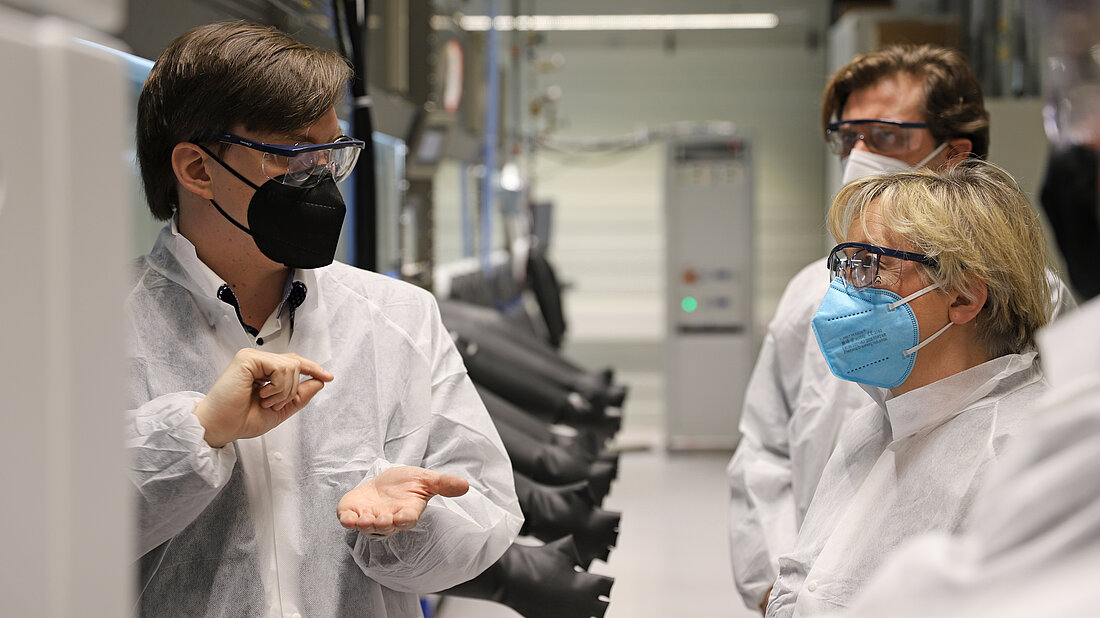Start of battery research lighthouse project

State Science Minister Theresia Bauer visits worldwide unique, fully digitalized and automated laboratory for accelerated material development
In a cooperation between the Karlsruhe Institute of Technology (KIT) and the University of Ulm, a radically new paradigm for battery material development is being pursued at the POLiS Cluster of Excellence and the Helmholtz Institute Ulm (HIU): in the final stage of expansion, the now completed facility will be able to build batteries around the clock, analyze thousands of interfaces, evaluate them using artificial intelligence (AI) methods, and plan new experiments. This should decisively accelerate research into new battery materials.
New types of powerful and sustainable batteries are needed for the transportation and energy transition. This poses a major challenge because it takes decades from the idea to the finished product using current methods. The new lighthouse project will provide important impetus to accelerate the development process. Science Minister Theresia Bauer said during her visit to POLiS and the HIU on the occasion of the launch: "With the funding of this new materials development platform, a globally unique research infrastructure has been created. We hope it will provide a significant boost to research into energy storage systems, which are essential in the transformation of our energy system and our mobility. At the same time, the funding has enabled us to recruit Prof. Helge Stein as a creative and enterprising mind for our team in Ulm."
"We are now able to synthesize and assemble batteries and their individual components in an automated way, trigger a measurement and evaluate it in a fully automated way. Based on the data, the AI-supported system can now even decide which experiment to perform next," explains tenure-track Prof. Helge Stein (KIT), research unit spokesperson at POLiS. He and his group developed the combinatorial material synthesis, high-throughput characterization, and data mining techniques with the help of AI methods in experiment evaluation and planning. The facility represents the first fully integrated Platform for Accelerated Electrochemical Energy Storage Research (PLACES/R). Battery research is characterized by the search for the ideal combination of materials, their composition and process technologies. Testing all possible variations with all materials would take millennia using classical methods. "Our facility can test several hundred such variations a day. This is roughly equivalent to the average life's work of a researcher," Stein said. In addition to acceleration through automation, the algorithms and AI can achieve an additional factor of 10 faster optimization, bringing promising battery materials to market faster and at lower cost.
The research facility is also embedded in a European framework. Data collected by the facility from all areas of the battery development cycle will be shared with 34 institutions from 15 countries in the BIG-MAP project of the European research initiative BATTERY2030+. "The fully automated laboratory will not only enable us and our European partners to develop components for new batteries much faster, but also ensure that they can be produced at such low cost that it will be even more attractive in the future to store electricity, for example from the sun and wind, in batteries," says Prof. Maximilian Fichtner, director of HIU as well as spokesperson for POLiS.
#Battery #Research ??♀️??? goes #Artificial #Intelligence in #Ulm: Some words by @TheresiaBauer, Minister for #Science of #Baden-#Württemberg, @MaxFichtner & @helsoeste @BIGMAP_EU @CELEST_18 @ClusterPolis @KITKarlsruhe @DLR_de @uni_ulm @ZSW_BW @ClusterPolis #THELAEND #AI pic.twitter.com/GL03vGvL3D
— Helmholtz Institute Ulm ?? (@HelmholtzUlm) February 10, 2022


